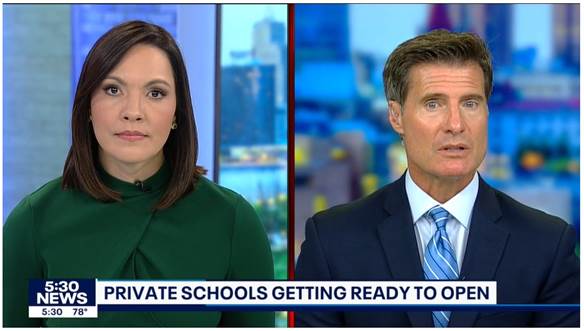Have you ever wondered which Minnesota school districts are the best? That’s a question that the school assessment company Niche.com answers.
According to the news service Patch, Niche has just released its rankings ahead of the 2024-2025 school year. These rankings are “based on analysis of academic and student life data from the U.S. Department of Education plus test scores, college data, and ratings collected from Niche users.”
For those districts which made the list, congratulations are in order!
Nonetheless, before we take this list as gospel truth and rush to send our children to the districts listed, a couple observations are in order.
The first observation is that three out of the top 10 districts on this list are charter schools: Nova Classical Academy, St. Croix Preparatory Academy, and Eagle Ridge Academy Charter School.
Charter schools are funded by public dollars but operate independently from traditional district schools. In essence, they are public schools of choice that have greater flexibility in academics, mission, and other areas of student life and learning.
The fact that three “schools of choice” made the top 10 of Niche’s list signals that greater educational freedom and flexibility for schools can lead to impressive results. It’s clear, too, that parents and families like options and will gravitate toward schools they believe provide a high-quality education. One can only wonder what this list would look like if it was expanded to include other choice options, such as private schools and micro-schools.
But let’s take these schools of choice out of the equation for a moment. If we just leave district schools, we find 10 names that are often held up as exemplary models of education in Minnesota. But are they?
Below is a chart with the top 10 public school districts according to Niche.com. We then added the math and reading proficiency rates of those districts’ high school students using the assessments published by the Minnesota Department of Education. Of note, 10th-grade is the last time reading proficiency is assessed and 11th-grade is the last time math proficiency is assessed.

Wayzata Public School District comes in at number one with a high school reading proficiency of 83% and a math proficiency rate of 78%. Those are pretty stellar numbers when grading on a curve. But on a traditional A-F grading scale, such numbers only register as a low B or high C. Put differently, roughly 1 in 5 high school students in Wayzata Public Schools are not reading proficiently.
By the time we hop down to number five on the top-10 list, Orono Public School District, we’re in D territory for reading proficiency (65%) and F territory for math (56%). The schools below the number five slot show similar proficiency ratings. Talk about a quick drop.
Now, consider how many parents rely on such rankings when deciding where to send their children to school, or even where to live as a family. These schools look great when grading on a curve of 329 Minnesota public school districts. But when judged on their true academic statistics, they offer a much different picture.
One wonders just how many parents would choose one of these districts for their children if they knew that in many of them roughly half of the students will leave high school unable to attain proficiency in math or reading.
Unfortunately, it doesn’t really matter much at this point because most Minnesotan parents are stuck with only a few education options—unless they want to fork out a ton of their own money.
That’s why Education Savings Accounts (ESAs) matter so much. Instead of pouring all education funds into a certain school or district and insisting a child must go there, ESAs allow $7,000 in public funds to follow each child to the school of his or her choice, whether public, private, charter, micro, or home.
When the dollars follow the student, the reins are put back in parental hands, allowing them to make the decisions and spend the money wisely in order to get the most bang for their child’s educational dollar. Furthermore, as schools compete for funds and are held accountable for student progress, we will likely see a rise in proficiency rates across the state.
As the chart above shows, even the best public schools don’t produce the greatest results. Isn’t it time we let educational dollars follow students, giving parents the means to afford the best school they can find for their children?
—
Image Credit: Pexels











![[downloaded during free trial]](https://oakmn.org/wp-content/uploads/2025/11/iStock-1430368205-120x86.jpg)

